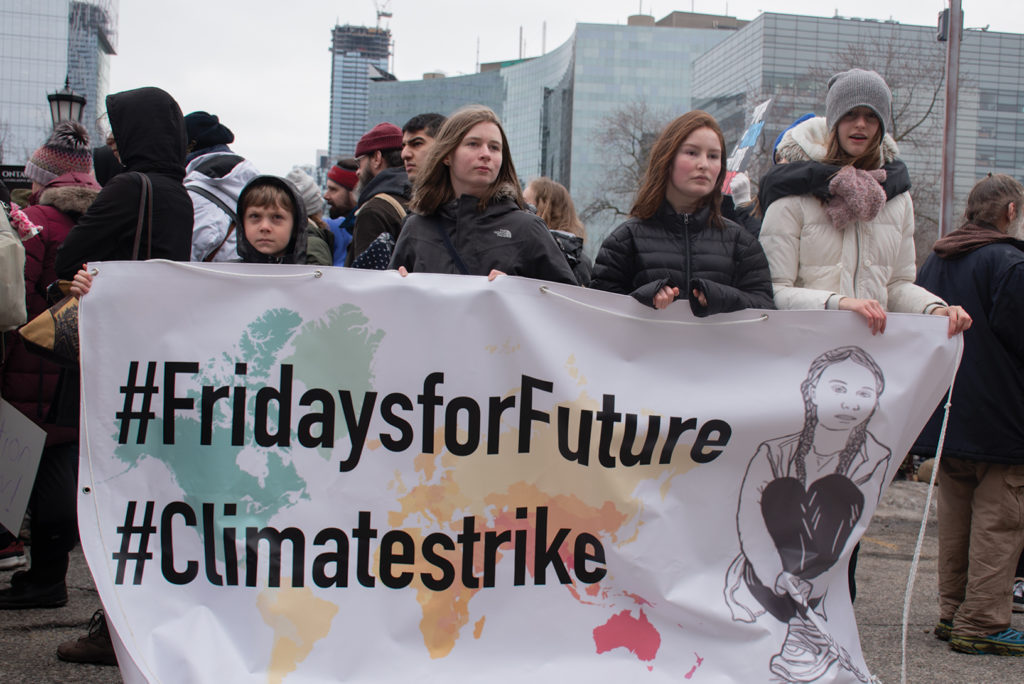By Madeline Jafarnejad
It’s possible that a person can feel powerful simply by hitting “Share” on a Facebook post about a social issue they’re passionate about. But why is this? News articles, petitions, a hashtag, are all ways we see and share information about what is going on in the world around us. Recently, one of the hottest topics in the media is climate change. The photo of the skinny polar bear, the rainforest wildfire, Greta Thunberg’s Fridays for Future movement. These are all things that have gone viral thanks to social media and as a result, there are arguments as to whether or not participating in these movements or spreading this information online counts of activism.
By definition, activism consists of efforts to bring about social or political change. Due to the minimal amount of effort it takes to do something like “Share” or “Retweet” something on social media. Even though social media was created as a way for people to connect online, it has been used as an electronic tool of liberation. To connect with like-minded individuals, rally up the masses, sway public opinion, encourage social change and start social movements, many are still calling this kind of digital activism, “slacktivism.” And when it comes to the climate crisis specifically, experts say that digital activism is not enough to bring about actual change politically and therefore people that participate in digital “activism” should not even be considered activists.
Renee Sieber teaches Computer Models for Social Change at McGill University and studies virtual activism. She says social media can not substitute physical activities when it comes to activism. Going to a protest is much different than liking or retweeting something online and this is what differentiates “slacktivism” and actual activism. Sieber says in order for something to be considered activism it must have intensity and requires investment.
“If all you do it virtual activism, forget it” says Seiber. “ You have to put your physicality on the line at some point. It’s not lazy, it’s ideological and the ideology is that virtual activism can be a substitute for physical activism but I’m arguing that it is only meant for certain kinds of activity and it’s not going to cause policy makers or private sector companies to back down.” Sieber says that she thinks of activism as a process not an outcome. She says it’s a “means to an end” and that end is social change. So if people are using hashtags and signing online petitions with the intention to cause change but then nothing happens, this is not meeting up to her standards of real activism.
“Signing a petition is a one shot thing and it is very remote, liking something or retweeting something or using the same hashtag well that might make you feel good but it is activism?,” says Sieber. “Well it’s an act but activism implies things like you’re lying down in the street or you’ve made some kind of intense investment.”
Sieber measures activism with time and dedication. Signing an online petition takes maybe a few minutes but attending a protest is far more intense in regards to how much effort it takes. This goes back to the idea of “slacktivism” which people are defining as lazy activism because of how little time and energy it takes to do something on the internet. It takes seconds to “Like”, “Share” or “Tweet” something, but it takes a lot more effort to get up, get out and fight on the front-lines of a social issue.
“One of the problems in digital activism these days is intensity,” she says. “It takes seconds to like something and probably several hours to attend a protest but if you only attend the one day event can you call yourself a climate activist?”
According to the Global Climate Strike’s website, 7.6 million people in 185 different countries took to the streets between the 20th and 27th of September 2019 to protest climate change. Thousands turned up in Toronto alone in support of the strike and specifically, Greta Thunberg’s Fridays for Future movement. However, it started off small last year, with only 377 “interested” and 104 “going” according to the Facebook page for the city’s first ever Fridays for Future Climate Strike. Alienor Rougeot is a third year Economics and Public Policy student at the University of Toronto and is the head organizer of the movement in Toronto. She said it all started when she saw the climate strikes happening in Europe including France, where she is from.
In an interview with Convergence, Rougeot says she believes social media has helped in regards to meeting up with other organizers and attracting attention to the protests by using event pages on Facebook but she also acknowledges its negative aspects.
“One of the downsides is the amount of people that come to protests with a funny sign just to take a picture, put it up and consider that activism, it is problematic,” says Rougeot.
“Sometimes doing that allows you to be content with yourself but given the emergency of the situation it is very much a false sense of accomplishment.”
She says she believes these people may be in support of the movement, but she wouldn’t call them activists because at the end of the day they want to have a tangible impact. In a digital age, it is very easy for people to create an image of themselves online but to Rougeot, it is what we actually do on a day-to-day basis that really counts. So like Sieber, she believes it’s not posting online that you’re against plastic straws that will create social change, it is physical action.
Rougeout says the most tangible change she’s seen as a result of the Fridays for Future movement is Toronto declaring a climate emergency after protests in front of City Hall. But she says she believes this still would’ve been possible without social media because there is a lot of in-person outreach.

The official Fridays for Future website was last updated on December 3, 2019 and says 12 million people have participated in the climate strikes worldwide since August 2018. Greta Thunberg has certainly gained a lot of attention on social media but social media expert and University of Toronto professor, Jeffrey Dvorkin, describes Thunberg as a “creature of social media.”
“Her presentation of herself and her ideas was initially reported in mainstream media but became kind of on fire in a really powerful way through social media and the fact that she has been able to galvanize opinion in the way she has is entirely a phenomenon of social media,” says Dvorkin.
“I first noticed a story about her in the New York Times and from there she was everywhere.”
Later in the interview with Convergence, Dvorkin goes as far describes Thunberg as “remarkable” in the way she was able to utilize social media to get her message out to the world.
But as to whether or not people who advocate for Thunberg’s causes online are real activists or not, Dvorkin believes, yes, in a way they are. He describes them as “supporters” but says that it would have to depend on how active they really are. But overall, he believes any small contribution counts.
“Every time someone retweets of reposts that involves this young girl it’s an expression of digital activism,” says Dvorkin. “It’s not as if everyone who reposts something about Greta Thunberg is out there in the streets demanding change in environmental policy but it has a kind of grain of sand effect that builds up to some kind of gigantic mountain of concern and opinion about the need for social change in regard to the environment.”
A study conducted by Mainstreet Research found that out of 2651 Canadians surveyed between July 27 and July 2 in 2019, 61 per cent agreed that the government should focus on the issue of climate change. Dvorkin says this is an example of Thunberg’s influence starting to cause real social change because since the Conversative party missed that, those 61% tended to vote Liberal.
“This is an example of how activism and awareness about the environment is able, in certain situations, to be massively appealing across all kinds of boundaries and I think social media does that,” Dvorkin says.
So is digital activism an effective way to create large scale positive change in regards to the climate crisis? It is possible that the mass spread of information online can contribute to the success of climate change movements like Fridays for Future but it is also likely that unless these “digital activists” get off their couches, not much is going to happen.

